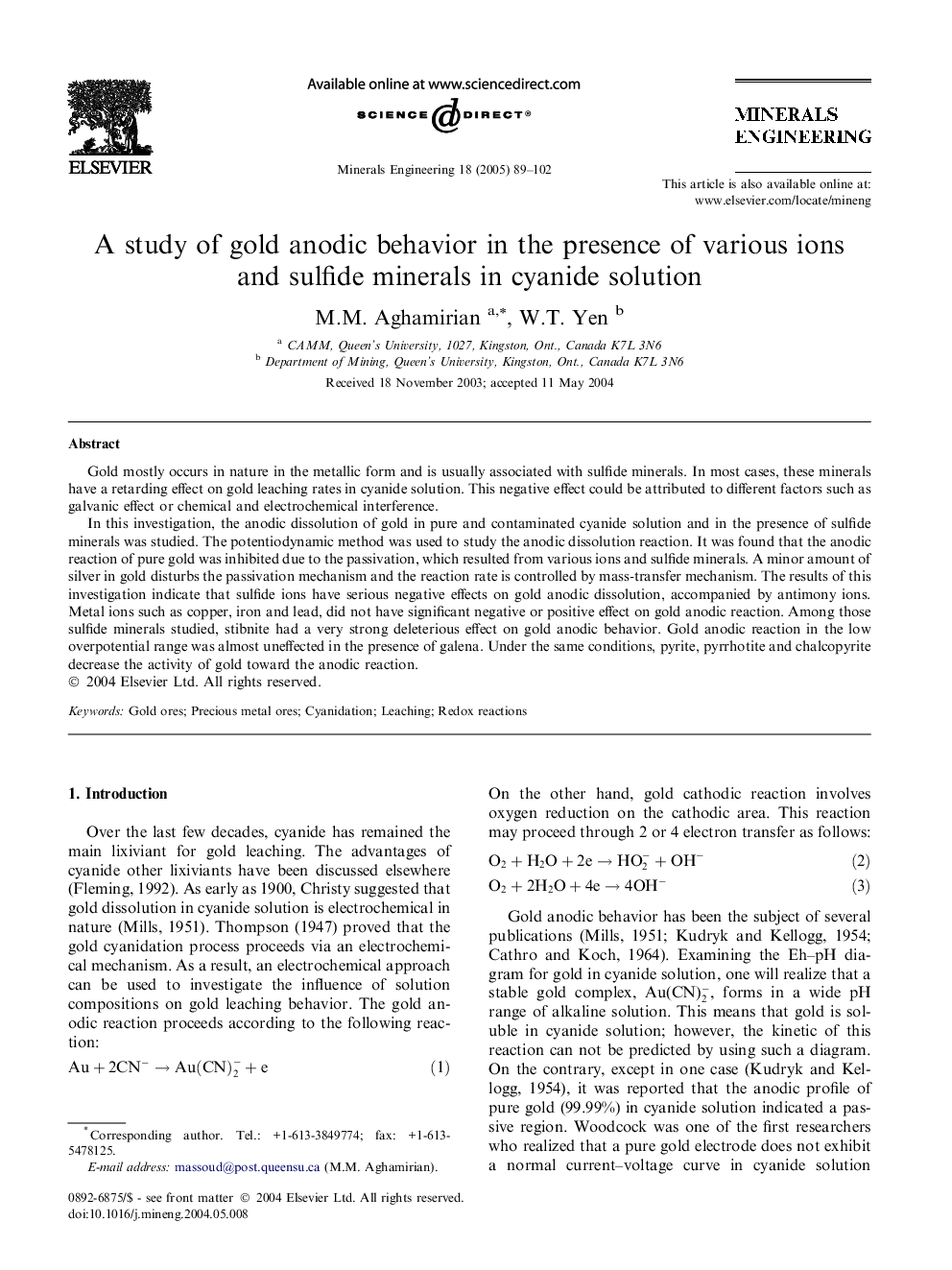| Article ID | Journal | Published Year | Pages | File Type |
|---|---|---|---|---|
| 10280206 | Minerals Engineering | 2005 | 14 Pages |
Abstract
In this investigation, the anodic dissolution of gold in pure and contaminated cyanide solution and in the presence of sulfide minerals was studied. The potentiodynamic method was used to study the anodic dissolution reaction. It was found that the anodic reaction of pure gold was inhibited due to the passivation, which resulted from various ions and sulfide minerals. A minor amount of silver in gold disturbs the passivation mechanism and the reaction rate is controlled by mass-transfer mechanism. The results of this investigation indicate that sulfide ions have serious negative effects on gold anodic dissolution, accompanied by antimony ions. Metal ions such as copper, iron and lead, did not have significant negative or positive effect on gold anodic reaction. Among those sulfide minerals studied, stibnite had a very strong deleterious effect on gold anodic behavior. Gold anodic reaction in the low overpotential range was almost uneffected in the presence of galena. Under the same conditions, pyrite, pyrrhotite and chalcopyrite decrease the activity of gold toward the anodic reaction.
Related Topics
Physical Sciences and Engineering
Chemical Engineering
Chemical Engineering (General)
Authors
M.M. Aghamirian, W.T. Yen,
